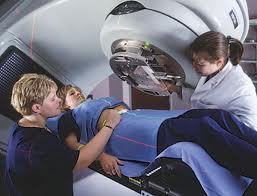by
Brendon Nafziger, DOTmed News Associate Editor | September 26, 2011
Treating prostate cancer patients with intensity modulated radiation therapy was linked with 26 percent fewer future bowel or rectal side effects than when using 3D-conformal radiation therapy, according to a new study, slotted to be presented next Monday at the American Society for Radiation Oncology's 2011 annual conference in Miami.
The IMRT technology also allowed doctors to reduce the radiation dose to the bladder and rectum, the researchers said.
"This study shows that IMRT is not only safe and very well tolerated, it's associated with many fewer complications than 3-D CRT therapy," Dr. Jeff Michalski, study author and a radiation oncologist with Washington University Medical Center in St. Louis, told reporters on a call Monday. "And I believe the study continues to support the use of IMRT in the management of localized prostate cancer."



Ad Statistics
Times Displayed: 0
Times Visited: 0 Keep biomedical devices ready to go, so care teams can be ready to care for patients. GE HealthCare’s ReadySee™ helps overcome frustrations due to lack of network and device visibility, manual troubleshooting, and downtime.
3D-CRT uses imaging and computers to shape the radiation beam so more healthy tissue is spared from radiation. IMRT is a more advanced form of this technology, the researchers said, and began to be adopted about a decade ago.
"From a technical perspective, there seemed to be an advantage of lower dose to bladder and rectum (with IMRT), compared to 3D-conformal. But what we were lacking was a good data set," Michalski said. He said earlier studies on the technology had shown that some doctors could use higher doses of radiation on patients, yet with fewer complications.
The current study involved 748 men, randomly selected for the high-dose arm of a phase III Radiation Therapy Oncology Group trial. In this group, 491 were treated with 3D-CRT, and 257 with IMRT.
Although the two groups didn't differ in bladder toxicity, men treated with IMRT experienced a drop in Grade 2 or greater rectal and bowel toxicity, accompanied by a 26 percent decrease in late rectal and bowel side effects. (Toxicity was graded from 0 - no toxicity, to 4 - severe toxicity.)
Michalski said late, or delayed, effects, are important to control, as they can be irreversible.
"What we're seeing, quite convincingly, is IMRT is very much associated with lower doses to bowel and bladder, and those lower doses are translating into actual clinical outcomes," he said.
Dr. Michael Steinberg, ASTRO's president, noted that studies like this are necessary to help "show that technologies with increased costs have benefit or value to the patients."
"It shows that the improved and more costly technology of intensity modulated radiation therapy does appear to yield real benefits in terms of significant decrease in toxicity when compared to 3-D conformal therapy," he said on the call.
Dr. Michalski will present the abstract, "Preliminary Analysis of 3D-CRT vs. IMRT on the High Dose Arm of the RTOG 0126 Prostate Cancer Trial: Toxicity Report," at ASTRO's annual meeting in Miami at 2:15 p.m. on Oct. 3.

